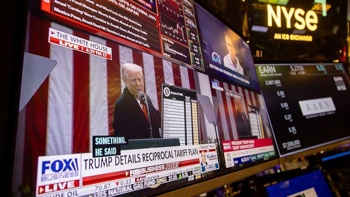Treasurer Josh Frydenberg has revealed a massive new program aimed at boosting Australia’s “jobs recovery”.
But while it has been designed to get more Aussies back to work, it will leave millions of us out in the cold.
The $4 billion JobMaker Hiring Credit will encourage businesses to hire younger Australians – and has been tailored to give those on JobSeeker who are aged between 16 and 35 a helping hand.
But it’s just the latest in a string of major government schemes to be rolled out during the coronavirus crisis – so if you’re confused about the new JobMaker plan as well as all the recent changes to JobKeeper and JobSeeker, here’s everything you need to know.
JOBMAKER
Mr Frydenberg revealed the JobMaker Hiring Credit during Tuesday’s Budget announcement, explaining there was “no economic recovery without a jobs recovery”, stressing the Budget was “all about jobs”.
Therefore, from tonight, the JobMaker program will come into effect to make younger employees more attractive to businesses.
The JobMaker hiring credit will be payable for up to 12 months and will be immediately available to employers who hire those on JobSeeker who are aged 16 to 35.
It will be paid at the rate of $200 per week for those aged under 30, and $100 per week for those aged between 30-35.
New hires must work for at least 20 hours a week, and all businesses except for the major banks will be eligible.
Treasury estimates that this will support around 450,000 jobs for young people.
Mr Frydenberg said it had been developed as young people had been “particularly hard hit” by “extensive” job losses during the coronavirus crisis.
“Having a job means more than earning an income,” he said.
“It means economic security. It means independence. It means opportunity.
“We can’t let this COVID recession take that away.”
To be eligible, young job seekers will have received the JobSeeker Payment, Youth Allowance (Other) or the Parenting Payment for at least one of the previous three months at the time of hiring.
Meanwhile, employers must prove they have increased their overall employment to receive the payment for up to 12 months for each position created.
To claim the JobMaker Hiring Credit, employers need to report their employees’ payroll information to the Australian Taxation Office through Single Touch Payroll.
JOBKEEPER
The JobKeeper wage subsidy was another measure introduced by the government to help keep Australians afloat during the pandemic.
It was originally worth $1500 a fortnight and open to any business that could prove a large reduction in overall turnover, with different criteria for small and large businesses.
But while it was extended for a further six months than originally planned, to March 28, 2021, it has also been significantly cut.
The rate of payments was slashed by $300 to $1200 a fortnight in late September for full-time employees who work more than 20 hours on average a week, while part-time staff who work less than 20 hours a week now get $750 per fortnight.
The eligibility criteria has also been tightened, and $30 billion was been earmarked for the new version of the scheme – dubbed “JobKeeper 2.0” – compared with a far more generous $70 billion for the initial program.
JobKeeper will be cut again on January 4, 2021 to $1000 or $650, depending on hours worked, and will be pulled completely on March 28, 2021.
In the 2020-21 Budget, JobKeeper is described as “one of the largest fiscal and labour market interventions in Australia’s history” which is estimated to cost $101.3 billion over 2019-20 and 2020-21 and is currently supporting around 3.5 million individuals, in over 900,000 businesses.
JOBSEEKER
The JobSeeker payments were doubled to $1100 a fortnight thanks to a special temporary $550 Coronavirus Supplement introduced to help those who found themselves out of work because of the pandemic.
But late last month the supplement was also scaled back to $250 a fortnight.
It will expire on December 31 this year, when it is feared JobSeeker will revert back to its pre-coronavirus level which equated to just $40 a day.
The Australian Council of Social Service had launched a nationwide campaign to raise the rate of the payment, and CEO Cassandra Goldie said in a statement she was disappointed the Federal Budget “failed to deliver a permanent, adequate JobSeeker rate”.
“It leaves more than two million people receiving higher income support uncertain about their future beyond the end of the year, when income support rates will go to their pre-COVID levels – which, for JobSeeker, was $40 a day,” she said.
“This Budget provides a glimmer of hope on jobs for young people in a really tough year. While we welcome the wage subsidy for under-35s who are badly impacted in this recession, the Budget lets down 900,000 people on JobSeeker who are over 35.
“We’re calling for the wage subsidy for young people to be urgently extended to people of all ages who have been unemployed for a year or longer.”
Take your Radio, Podcasts and Music with you








